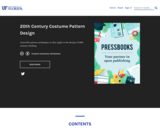
Learn flat pattern techniques as they apply to the design of 20th century clothing.
- Subject:
- Arts and Humanities
- Visual arts
- Material Type:
- Textbook
- Provider:
- University of Florida Pressbooks
- Author:
- Jennifer K. Smith
- Date Added:
- 07/23/2020

Learn flat pattern techniques as they apply to the design of 20th century clothing.
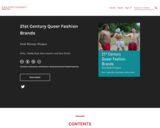
In the early part of the 21st century, several LGBTQIA+ focused clothing brands emerged on the market. The purpose of this project is to document the history of each brand using the oral history method. We conducted oral histories with 24 brands with questions ranging from their own personal histories to how and why they started the brand. We are interested in the lives of the individuals who founded the brands in addition to the entire story of each brand from idea development to today so that way these stories can be a documented as an important part of fashion and retail history. We purposefully make these oral history transcripts available to the community in order to move research beyond the walls of the academy and make knowledge accessible to everyone.
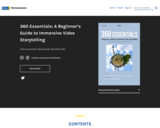
Our objective with this resource is to walk you through the essential steps in creating compelling and engaging 360 video experiences. While some prior experience with photography or videography can help, the technology available now gives anybody the ability to produce this type of amazing content.
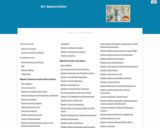
This course is particularly focused on helping you develop visual literacy skills, but all the college courses you take are to some degree about information literacy. Visual literacy is really just a specialized type of information literacy. The skills you acquire in this course will help you become an effective researcher in other fields, as well.
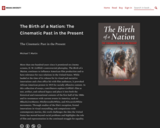
More than one hundred years since it premiered on cinema screens, D. W. Griffith’s controversial photoplay, The Birth of a Nation, continues to influence American film production and to have relevance for race relations in the United States. While lauded at the time of its release for its visual and narrative innovations and a box office hit with film audiences, it provoked African American protest in 1915 for racially offensive content. In this collection of essays, contributors explore Griffith’s film as text, artifact, and cultural legacy and place it into both the historical and transnational contexts of the first half of the 1900s and its resonances with current events in America, such as #BlackLivesMatter, #HollywoodSoWhite, and #OscarsSoWhite movements. Through studies of the film’s reception, formal innovations in visual storytelling, and comparisons with contemporary movies, this work challenges the idea the United States has moved beyond racial problems and highlights the role of film and representation in the continued struggle for equality.
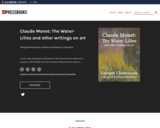
A new and annotated translation of the French Prime Minister’s memoir of his friend, the most famous Impressionist painter.
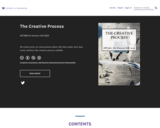
20 visual artists in conversation about why they make, how they work, and how the creative process unfolds.
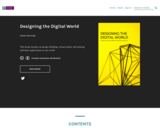
The book offers a blend of theory and practice in guiding readers to apply design thinking principles to solving some of our world’s biggest problems. At the same time, readers are encouraged to become aware of new and emerging technologies that make prototyping and applying solutions a reality.
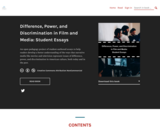
An open pedagogy project of student-authored essays to help readers develop a better understanding of the ways that narrative media like movies and television represent issues of difference, power, and discrimination in American culture, both today and in the past.
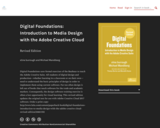
Digital Foundations uses formal exercises of the Bauhaus to teach the Adobe Creative Suite. All students of digital design and production—whether learning in a classroom or on their own—need to understand the basic principles of design in order to implement them using current software. Far too often design is left out of books that teach software for the trade and academic markets. Consequently, the design software training exercise is often a lost opportunity for visual learning. This revised edition updates the original text for use with Adobe Creative Cloud 2017 software.Order a print copy: http://www.lulu.com/content/paperback-book/digital-foundations-introduction-to-media-design-with-the-adobe-creative-cloud-revised-edition/24461332
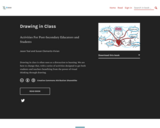
Drawing in class is often seen as a distraction to learning. We are here to change that, with a series of activities designed to get both students and teachers benefiting from the power of visual thinking through drawing.
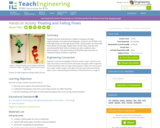
Students discover fluid dynamics related to buoyancy through experimentation and optional photography. Using one set of fluids, they make light fluids rise through denser fluids. Using another set, they make dense fluids sink through a lighter fluid. In both cases, they see and record beautiful fluid motion. Activities are also suitable as class demonstrations. The natural beauty of fluid flow opens the door to seeing the beauty of physics in general.

The resource "Aesthetics, Art Criticism and Art History" is a module in the "Visual Arts Comp 1" course. The course is included in the Georgia Virtual Learning resource series available in the open educational resources collection of the NCLOR. This resource is included in the Arts and Humanities discipline with the subject of Visual arts.
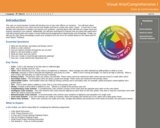
The resource "Color as Communication" is a module in the "Visual Arts Comp 1" course. The course is included in the Georgia Virtual Learning resource series available in the open educational resources collection of the NCLOR. This resource is included in the Arts and Humanities discipline with the subject of Visual arts.
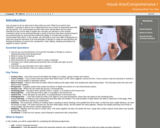
The resource "Drawing What You See" is a module in the "Visual Arts Comp 1" course. The course is included in the Georgia Virtual Learning resource series available in the open educational resources collection of the NCLOR. This resource is included in the Arts and Humanities discipline with the subject of Visual arts.
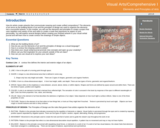
The resource "Elements and Principles of Arts" is a module in the "Visual Arts Comp 1" course. The course is included in the Georgia Virtual Learning resource series available in the open educational resources collection of the NCLOR. This resource is included in the Arts and Humanities discipline with the subject of Visual arts.
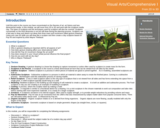
The resource "From 2D to 3D" is a module in the "Visual Arts Comp 1" course. The course is included in the Georgia Virtual Learning resource series available in the open educational resources collection of the NCLOR. This resource is included in the Arts and Humanities discipline with the subject of Visual arts.
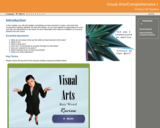
The resource "Pulling it All Together" is a module in the "Visual Arts Comp 1" course. The course is included in the Georgia Virtual Learning resource series available in the open educational resources collection of the NCLOR. This resource is included in the Arts and Humanities discipline with the subject of Visual arts.
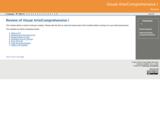
The resource "Visual Arts Comp 1 Review" is a module in the "Visual Arts Comp 1" course. The course is included in the Georgia Virtual Learning resource series available in the open educational resources collection of the NCLOR. This resource is included in the Arts and Humanities discipline with the subject of Visual arts.
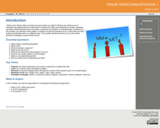
The resource "What is Art?" is a module in the "Visual Arts Comp 1" course. The course is included in the Georgia Virtual Learning resource series available in the open educational resources collection of the NCLOR. This resource is included in the Arts and Humanities discipline with the subject of Visual arts.